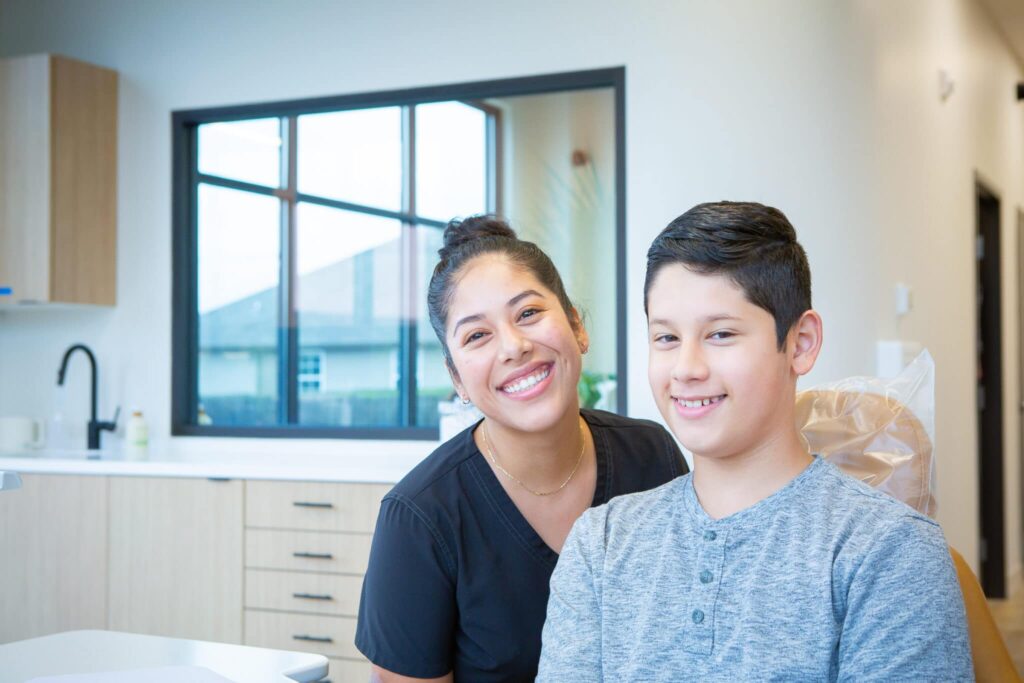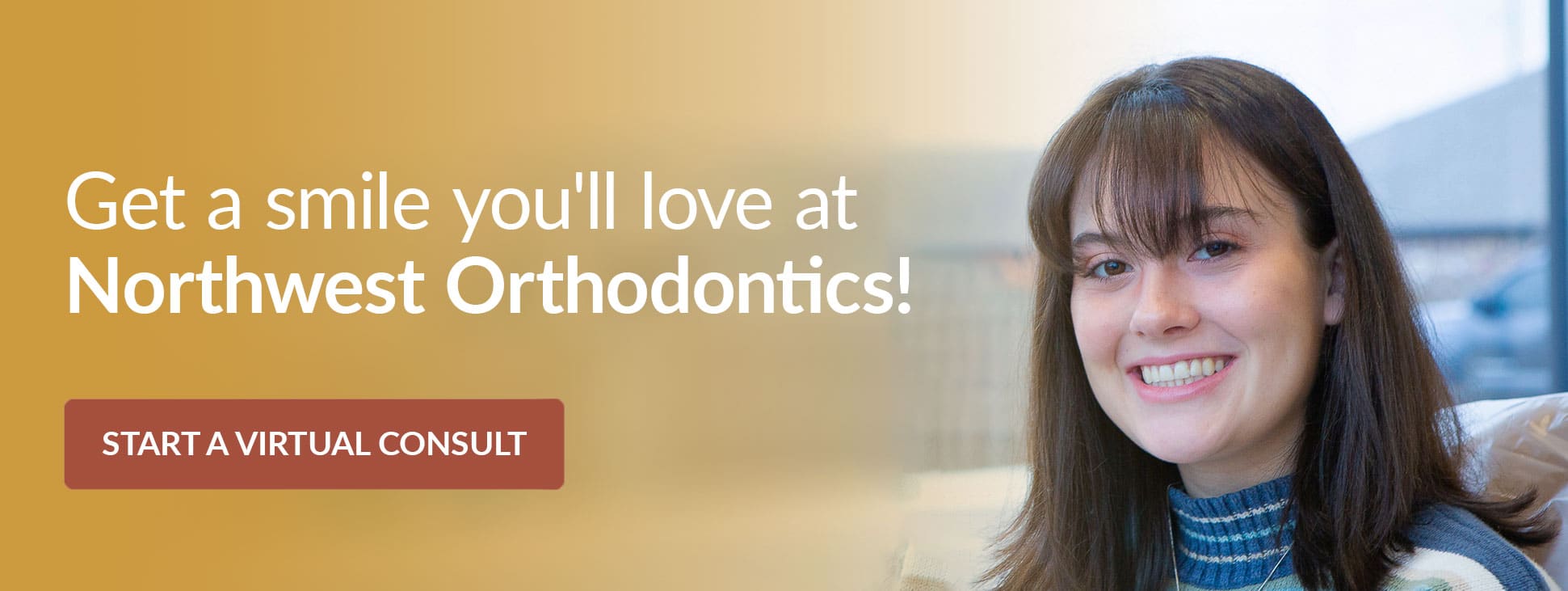Children can be born with a narrow palate or roof of the mouth. It may seem to be no big deal, but a narrow palate can cause several problems, from teeth overcrowding to breathing issues. That’s why it’s so important to address a narrow palate as soon as possible.
Palate expanders can solve the narrow palate problem, but it’s best to use the palate expander as early as possible. At Northwest Orthodontics, we know that children are easier to treat for palate issues than adults, though it’s not impossible for adults. How do you know if your child needs a palate expander, and what should you expect if they get one? We have the answers!
You’re probably wondering what we’re talking about when we say “palate expander.” It’s pretty much what it sounds like — a device that pushes against the back molars to expand the roof of the mouth. Wires wrap around the back molars to push them outward. A small joint in the center is adjusted daily by inserting a small key into it and twisting. This pushes the wires against the molars a little bit each day.
A palate expander works best on children because the two bones of the palate are not fused together yet like they are for adults. This means they can be adjusted and expanded easier than in adults whose bones are already fused.
There are three main types of palate expanders. Your child will likely use the Rapid Palate Expander, or RPE. Because the bones aren’t fused, the palate expander can move the bones apart faster and easier. This device widens the jaw much faster than those for adults.
Adult patients likely will use the Maxillary Skeletal Expansion (MSE) or Miniscrew-Assisted Rapid Palate Expander (MARPE). These palate expanders for adults work similarly to the RPE for children but at a slightly slower pace. That’s because these expanders essentially have to stretch the fused bones, which takes longer to do. In extreme cases, adults may need Surgically-Assisted Rapid Palate Expansion, or SARPE. This requires full surgery and is only used in the most extreme cases.



Narrow palates can cause a host of orthodontic issues, and they can get worse as your child grows. A narrow palate means your child’s permanent teeth probably won’t have enough room to come in straight or properly. Your child could end up with an overbite, a crossbite, crowded teeth or teeth that come in above the gumline. This could mean some significant orthodontic costs later.
A narrow palate can cause more problems than just crooked teeth. It can also cause breathing problems because the airways are narrow as well. As your child gets older, these breathing problems can become more pronounced and more serious. Your child could end up with sleep apnea, which has been shown to lead to sleep deprivation and heart problems.
If your child does need orthodontic treatment, we may use a palate expander first to make room for the teeth. It would be difficult for braces to do their job properly if there isn’t enough room for the teeth to line up properly.
This is why taking care of narrow palate problems early is important. Otherwise, they could become bigger and costlier problems later in their lives.
Looking at a palate expander, you may be a little worried about how it will feel in your child’s mouth. It certainly can look a bit intimidating. When the palate expander is installed initially, your child may have some discomfort as their mouth gets used to having this foreign object in it. After a few days, however, your child should do fine with the palate expander. As with other orthodontic expanders and devices, their mouths will be tender at first, but the discomfort will subside after a few days.
Your child can rinse their mouth with warm salt water to ease discomfort in the first few days. If pain persists after a week or so, feel free to give us a call and we will check on your child’s appliance and mouth.
Patients will typically need an expander for at least 6 months and in some cases as long as 1 year. Removing an expander too early can cause an immediate relapse of the expansion progress.
After your orthodontist has completed the expansion of your palate, they will leave a palatal expander in place. This is to ensure that while the body begins to fill in any missing bone within the suture after expanding, which can take up to one year for full replacement.
To ensure optimal results, most orthodontists will keep a palate expander in for at least half a year. After this period is over, some doctors opt to switch out the original device with either a trans-palatal arch or an acrylic retainer of reduced size; both are designed to retain and maintain the expansion achieved so far.
If an expander is damaged, dislodged or removed too early, the upper jaw will shrink back to its original size. To avoid this and decrease treatment times, it's essential that you follow your orthodontist’s instructions on how to care for your appliance. If not done correctly, the device may become loose or even break—a preventable issue if proper maintenance procedures are followed.
Does your child need a palate expander? That’s a tough question for parents, but that’s why Northwest Orthodontics is here! If you’re in the Northwest Arkansas or River Valley areas, you can schedule a virtual consult. From there, we can bring your child in for a full examination of your child’s mouth. We will be able to tell you whether a palate expander will be necessary for your child.
We can treat your child with a palate expander and can lay out a plan for further orthodontic treatment later, if necessary. With Northwest Orthodontics, you can rest assured that your youngster will be in safe, comfortable, and knowledgeable hands!

Privacy Policy | Accessibility Policy | Click for Accessibility